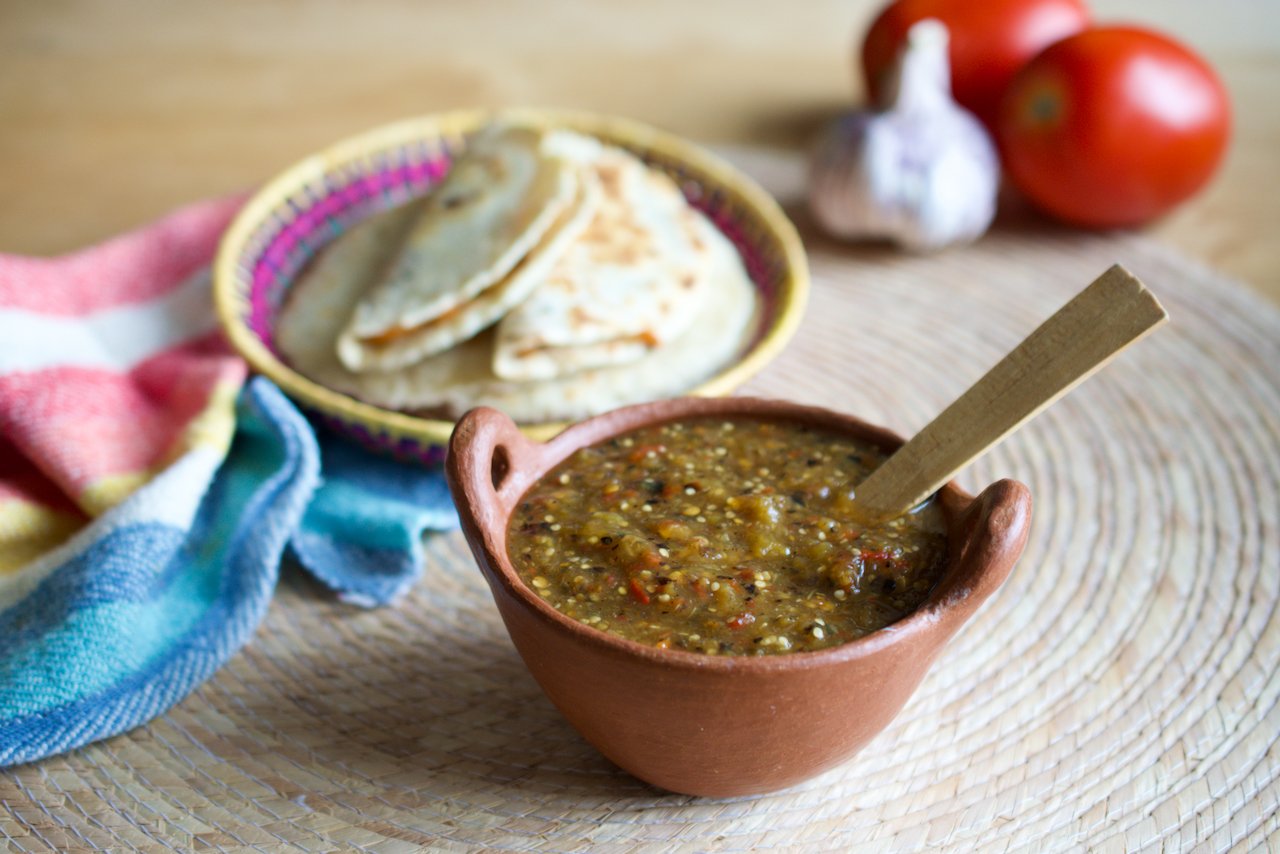I first learned how to make a salsa of this kind in Oaxaca, Mexico. I went there to learn from Chefs Iliana de la Vega who at the time had her restaurant El Naranjo (then eventually moved to Austin, Texas) and Susana Trilling from Seasons of My Heart Cooking School.
The food of Oaxaca is amongst the best in Mexico. Tradition, local ingredients, history and lots of love go into the food there. Everywhere you go, there is something delicious to try, whether it’s a giant tlayuda on the streets or the most delicious mole in one the many upscale restaurants. From food to coffee to mezcal, Oaxaca is a food heaven.
One of the best things to do in Oaxaca is to go to the markets (there are many and also in the surrounding towns), that’s where you will find everything you need to cook like a Oaxacan. The variety of dried chiles is astounding! Many of them, like chilhuacle negro and amarillo, costeño and pasilla de Oaxaca are only found there, so stock up if you’re there! Grasshoppers and other insects are also popular, moles, nuts and seeds, and of course, all the meat, fruit and vegetables are the freshest there.
I highly recommend a trip to Oaxaca, it truly is an amazing city and all the surrounding towns have their arts and crafts specialty, so it’s worth day-tripping to find some real beauties. There are also archaeological sites in the area, so there is something for everyone to see.
But going back to our recipe, this is a roasted salsa. What I like about this is you can use it as a base technique. Roasting tomatoes or tomatillos, onion, garlic and dried chiles makes an amazing salsa, but you can use this as a canvas to make your own favourite combination.
My favourite is a salsa made with tomatillos, with at least 3 kinds of dried chiles, like this one. I also make one with 4 chiles and that one is just as good. But if you only have one type of chile, that is also good. Chiles de árbol are fabulous and super spicy, I love using a smoky chipotle or fruity cascabel, and the tiny piquín chies add extra heat. Guajillos also add a beautiful colour and a sweet note. The sky is the limit in combinations here, but to achieve that depth of flavour, the trick is to use dried chiles, not fresh.
Using a molcajete makes this salsa very rustic, but if you don’t have one, a blender works fine, just make sure not to over-blend, as this salsa should have a bit of texture. Salt is very important in all salsas, but especially when using fresh tomatillos, as they’re very tart. I like to add a bit of salt at the beginning and always adjust once the salsa is blended.
Use this salsa in everything, but it is brilliant on barbecued meat, any kind of taco (especially simple bean tacos) or your breakfast eggs.
Salsa Asada de Tres Chiles
Roasted Three Chile Salsa
400g tomatillos, husked and washed
1/4 small Spanish onion, left in a chunk
2 small garlic cloves, unpeeled
1 dried chipotle or chipotle morita chile
3 small cascabel chiles
1 Tbsp dried piquín chiles
Sea salt to taste
Preheat griddle or cast iron pan over medium heat.
Place whole tomatillos, chunk of onion and garlic cloves on griddle and roast, turning as needed, until tomatillos are browned and completely soft, onion is charred and very soft, and garlic cloves are tender.
You will have to move things around the griddle as needed and remove vegetables as they are done so they don’t burn. Don’t be afraid of colour, but we want to avoid complete burnt areas.
When tomatillos, onions and garlic are done, remove from the pan. Chop onion and peel garlic.
Add chiles to pan and very quickly toast. The tiny piquín chiles will only require a few seconds, so be careful they don’t burn. The chipotle and cascabel will take a bit longer, but not more than a full minute.
In the molcajete, place 1 tsp sea salt and the onion and garlic and grind to a paste. Once that paste is smooth, add dried chiles and continue grinding until the chiles have broken down and the paste is smooth.
Start adding tomatillos a few at a time and grind until fairly smooth before adding more. Continue until all tomatillos are done.
Continue grinding salsa until you reach your desired consistency. Adjust salt to taste.
Makes about 1 1/2 cups.


